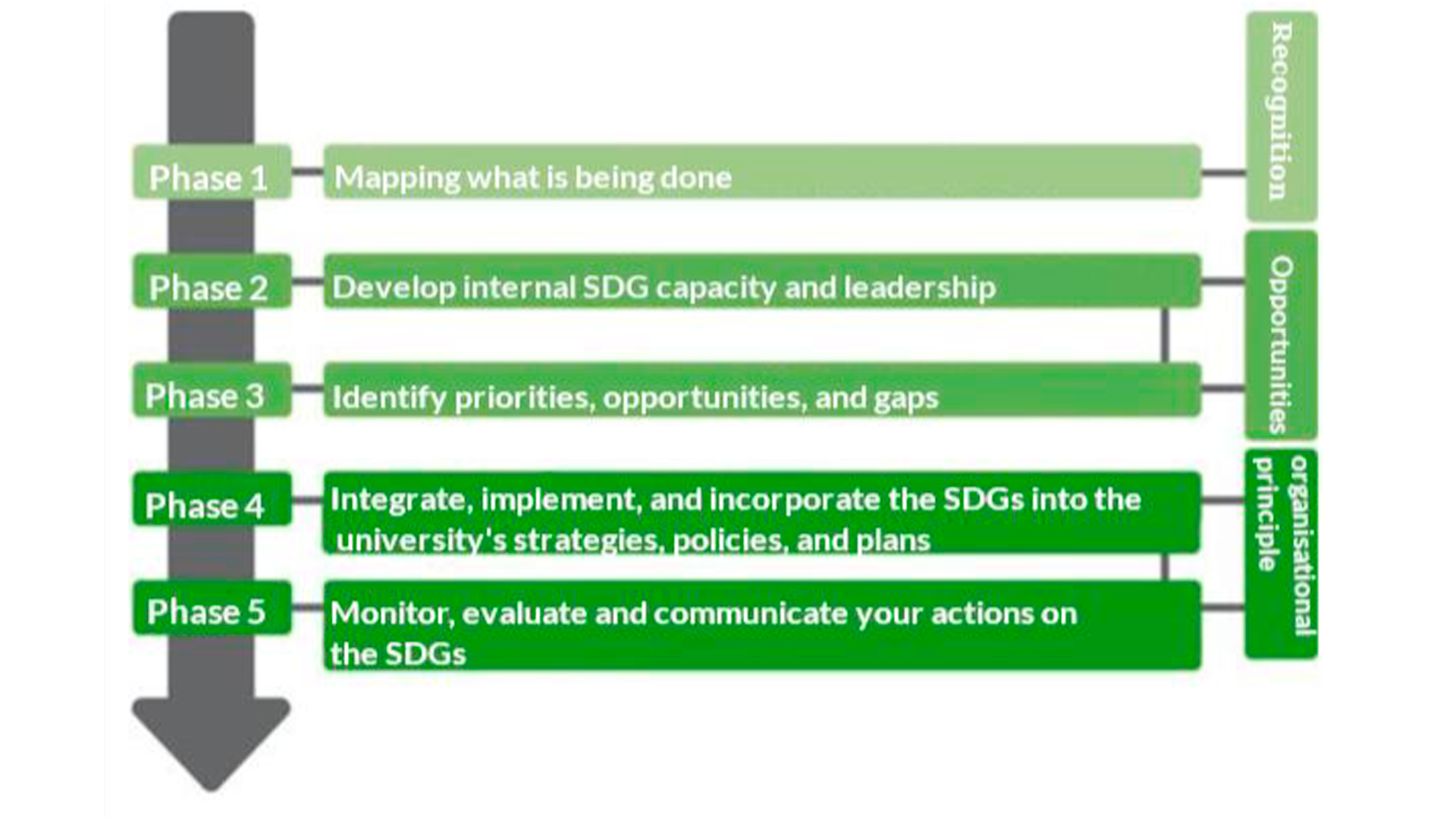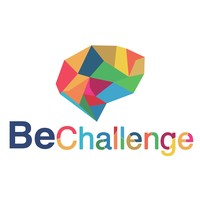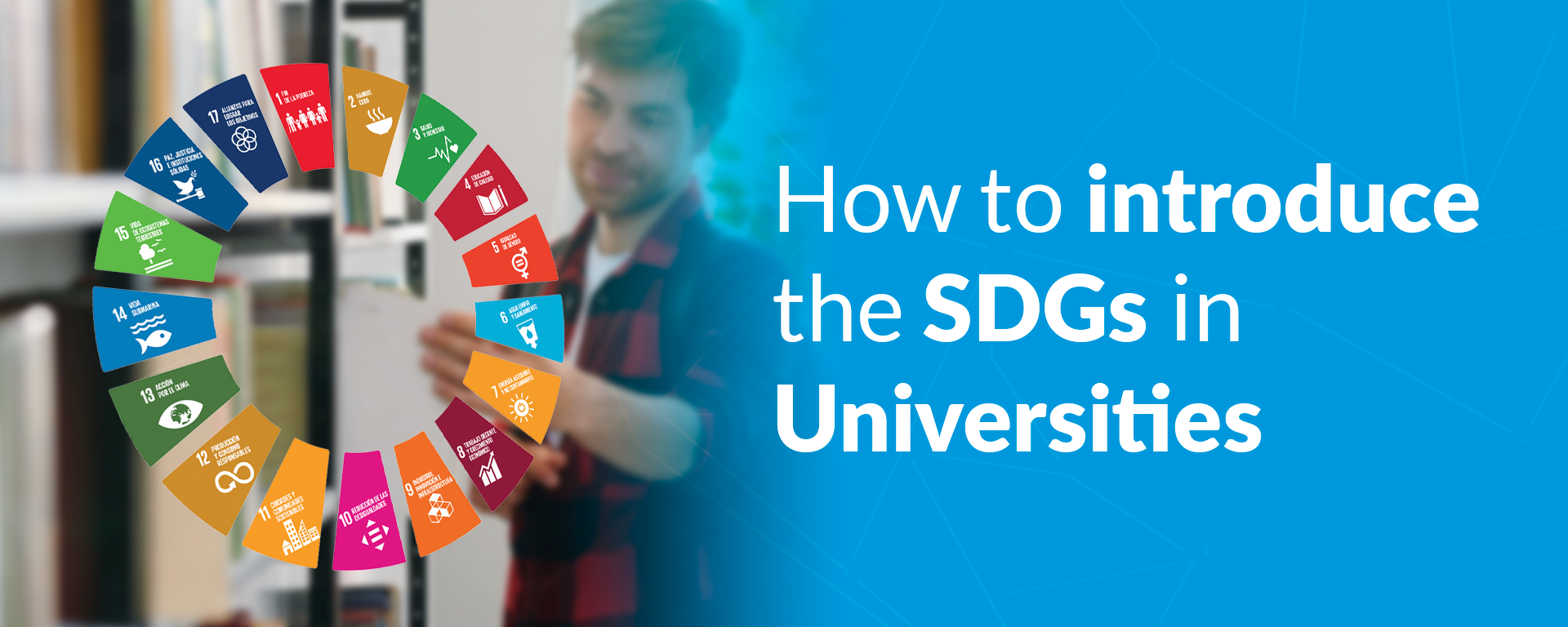Why is it important to introduce the SDGs in universities?
In our previous post on the importance of introducing the SDGs in universities we explained more extensively how, through their day-to-day work in education, research and other activities, universities are already making very important contributions to the achievement of the SDGs. However, for the SDGs to be achieved on a global scale, universities need to become advocates for sustainable development and play a leading role in their implementation. This is a challenging task. Universities are often constrained by external structural factors and internal limitations. Nevertheless, the SDGs provide a framework for working towards structural solutions, as well as for accelerating the contribution to local, national, and global well-being.
The SDGs present a unique opportunity to focus on solving the major challenges facing humanity. The SDGs are inclusive and diverse enough to allow the majority to express themselves, providing a common language and building a platform for collaboration.
But how can we introduce the SDGs in universities?
In different ways, in general, universities can engage with the SDGs in different levels:
- Recognition: identifying and communicating what a university is already doing to contribute to the SDGs can be a powerful narrative about its impact and a strong impetus for future actions.
- Strategic alignment: different areas of the university recognise the utility and importance of the SDGs and find opportunities to use this framework to carry out independent activities and programmes without a common strategy.
- Organisational: the continuous and widespread impact will occur if the SDGs become part of the regular activity of the university, through their recognition and integration into all relevant governance structures and spaces of relevance in the university.
Where to start?
In this graph you can see the phases of adaptation of the SDGs proposed by the SDSN Australian/Pacific.
These phases are designed to provide general guidance. Depending on the context and their starting point, some universities may want to work just on one, omit some, take on several together, or follow a different sequence of phases.

It is important to recognise that there is no single pathway for universities to implement or contribute to the SDGs. Universities differ from each other in many ways, including size, structure, access to funding, pre-existing work in sustainable development, values, priorities, and the needs of the communities they serve.
Phase 1 - Mapping what is being done
Mapping and analysing what is already being done at the university is the best way to identify key interest groups and potential leaders for the SDGs and to identify strengths and gaps in order to know how to prioritise the action plan.
With this mapping we can see what engagement the university already has and use it as a starting point to strengthen engagement and show what is already in place to look for synergies within the university.
Phase 2- Develop internal SDG capacity and leadership
Developing internal SDG capacity and leadership requires an understanding of current knowledge and engagement with the SDGs through research, learning, teaching, management, governance, and culture.
By discussing the global and local relevance of the SDGs, university constituents can develop a shared understanding of the SDGs, learn about each other's work and interests, begin to identify areas for action and collaboration, and develop both individual and collective leadership of the process. Engaging with the student body is the key to this Phase. You can start by organising workshops for students and interacting directly with student organisations.
Phase 3- Identify priorities, opportunities, and gaps
To achieve this phase, it is essential to establish a realistic and progressive basis for any action the university takes to integrate its commitment to the SDGs. Building a solid and cohesive base from which to act will protect us from ad hoc or reactive decisions.
It is important that the whole university is involved in achieving this Phase - including the student body - in identifying priorities, opportunities, and gaps, as this will be crucial for collective and cooperative SDG work across the university.
Phase 4- Integrate, implement, and incorporate the SDGs into the university's strategies, policies and plans.
This phase will require including the SDGs in various means of management, establishing coordination mechanisms for SDG action, and implementing policies, strategies and/or action plans. To complete this phase, clear and well-founded decisions need to be taken on how the SDGs will be integrated in a transversal way in all university strategies and policies. These strategies and policies could include each university's strategic plan; research, teaching and learning, and corporate engagement framework; future communication with the student body, etc.
Implementing the SDGs in a transversal way in strategies and policies implies one of the following options:
- Integrate SDG commitment and actions into a joint university-wide strategy and its supporting elements; or
- That the commitment and actions for the SDGs are reflected in a university policy that ensures a holistic approach to sustainable development.
The real transformative power occurs when the SDG framework is embedded within the entire university and becomes a standard practice.
Phase 5 - Monitor, evaluate and communicate your actions on the SDGs
How universities assess and realise their contributions to the SDGs is key to informing and shaping future commitments and actions. A coherent and well-informed monitoring, evaluation and communication plan will enable universities to create and share experiences to gain the necessary support for their future engagement with the SDGs and to broaden shared knowledge on the SDGs.
The tools used to measure and evaluate may already be in place within the university. For example, existing annual reports and standard communication procedures can be used, or they can be communicated to a specific body. Over time, universities or coordination bodies may develop their own standards of comparison in relation to the SDGs.
Here is a quick exercise:
EXERCICE
What is your university doing to promote the achievement of the SDGs?
Who is doing it?
How is doing it?
What could you improve?
Who could help you?
After answer these questions, do the same exercise again, but this time, instead of asking yourself, What can the university do for...? ask yourself, What can I do for...? remember that for the SDGs to be achieved, each and every one of us will have to do our bit, and that any first step, however small, can be the trigger for great change.
What can BeChallenge do to help you introduce the SDGs at university?
BeChallenge has been designed from the beginning to develop social impact challenges and become the meeting point between universities, governments, companies and students, with the main objective of promoting and contributing to the evolution of the Sustainable Development Goals.
The platform offers a collaborative environment that favors and promotes communication in every corner, apart from the chat that allows communication with individuals, teams, mentors and teachers. Both the resources proposed by the challenge organizers, as well as the solutions proposed by the participants, are collaborative environments in themselves that favor communication and feedback to design together the best solutions that can meet the challenges proposed by the SDGs.
The platform offers multiple types of challenges to suit the needs of your institution, if you want to work deeply on the challenge you can make a Full challenge that allows the development of very elaborate solutions through various iterations of feedback and mentoring, if on the other hand you need an express version we offer a method where participants can propose their outputs in only 3 phases and start working in teams from the beginning.
As an institution and depending on the objectives you have set for the contribution to the SDGs, the need may arise to work on these challenges in different ways and at different levels, the challenges may be public or private,they may be designed to be developed within the institution itself or seek the collaboration of other institutions, external mentors or even design challenges between several teachers so that interdisciplinary and transdisciplinary challenges are carried out.

In BeChallenge all challenges can be aligned with the SDGs that the challenge works on, as well as you can automatically select the learning objectives that we propose derived from each of the SDGs. You can then analyze the SDGs that are being implemented in your institution through our analytics to see which SDGs are being worked on and which ones need to be focused on.
If you are interested in incorporating SDG into your university, contact us and we will help you to incorporate it into your curriculum, as we have already done with institutions around the world.
Do not hesitate to contact us: hello@bechallenge.io
IIf you have found this article interesting, you can follow us on our social networks and suscribe to our NEWSLETTER by registering at BeChallenge.io
[DISPLAY_ULTIMATE_PLUS]
References
- SDSN Australia/Pacific (2017): Getting started with the SDGs in universities: A guide for universities, higher education institutions, and the academic sector. Australia, New Zealand and Pacific Edition. Sustainable Development Solutions Network – Australia/Pacific, Melbourne.
- Global Reporting Institute (GRI), United Nations Global Compact (UNGC) & World Business Council for Sustainable Development (WBCSD) 2015, The SDG Compass: The guide for business action on the SDGs, sdgcompass.org/wp-content/uploads/2015/12/019104_SDG_Compass_ Guide_2015.pdf.
- Sustainable Development Solutions Network (SDSN) 2015, Getting started with the SDGs: A guide for stakeholders, SDSN, New York, sdg.guide.
- United Nations (UN) General Assembly 2015, Transforming our world: The 2030 Agenda for Sustainable Development, A/RES/70/1 (21 October), viewed 3 August 2017, www.refworld.org/ docid/57b6e3e44.html.
- United Nations Educational, Scientific and Cultural Organization (UNESCO) 2014, Sustainable development begins with education, UNESCO, Paris, unesdoc.unesco.org/ images/0023/002305/230508e.pdf.
- UNESCO 2016, ‘Education for people and planet: Creating sustainable futures for all’, New Global Education Monitoring Report Series, UNESCO, Paris, en.unesco.org/gem-report/report/2016/ education-people-and-planet-creating-sustainable-futures-all.
¿Quieres transformar el aprendizaje en tu institución?
Solicita una demo gratuita y descubre cómo BeChallenge te acompaña en el proceso.
Solicita una demo gratuita
